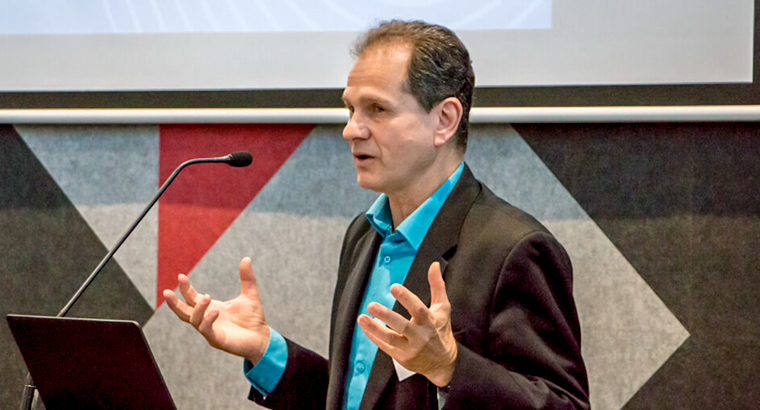Feature
Is My Health Record becoming useful to GPs?
Five months after the opt-out period ended, has Australia’s digital health repository hit the threshold for usefulness?
 My Health Record promised a lot. Is it starting to deliver?
My Health Record promised a lot. Is it starting to deliver?
Some GPs give an emphatic yes, while others say it is still a work in progress.
But that may depend on where GPs are based, with some states seeing far higher hospital uptake than others.
Following months of at times tense debate around privacy and security provisions for the digital health record, around 90% of Australians now have a My Health Record, a system built by the Australian Digital Health Agency (ADHA).
Around 90% of general practices and 83% of pharmacies have now signed up. More than 700 hospitals are connected, and the ADHA estimates around 20 million clinical documents are now online, including 3.3 million discharge summaries.
But progress has been piecemeal, with one expert telling newsGP Victoria’s decentralised hospital network is making sign-up slower than in other states where public hospitals are centralised.
Public hospitals in Victoria have lagged, with only 35% connected as of December last year.
South Australia has had a major shift within the last fortnight, with news that almost all of SA Health’s public hospitals and the publicly owned pathology provider SA Pathology are now connected and uploading results, giving GPs easier access to test results and discharge summaries.
Adelaide GP Dr Daniel Byrne welcomed the news, telling Pulse+IT he believed My Health Record would be a ‘game changer’ for the way he practises.
Dr Byrne told newsGP the expansion in South Australia means that My Health Record is now of genuine use to him.
‘Now that I can look up medications, pathology, radiology, and discharge summaries, it is useful,’ he said.
‘In the previous five years [before the shift to opt-out], there was nothing in there. It was a chicken-and-egg thing – you won’t use it because there’s nothing there, and nothing is there because people weren’t using it.’

Adelaide GP Dr Daniel Byrne said My Health Record is now of more use because most the South Australia’s public hospitals are connected and uploading results.
Dr Byrne recently had a patient return from emergency, with all tests ‘laid out perfectly’ in their record.
‘It was too good to believe, but it was true,’ he said. ‘That was only two weeks ago, and I’ve used it multiple times since, looking up MRI results and helping patients with complex diseases.
‘I’ve had patients say, the hospitals never told me this [about their illness]. GPs are expert at decoding test results into patient-friendly language.’
Dr Byrne said it is useful for GPs to know that patients would be able to see their own test results seven days after being entered into My Health Record, with the gap to allow doctors to contact their patients in the meantime.
Dr Byrne believes the private sector now needs to get on board.
‘They’ll have to,’ he said.
‘I’ll move my pathology testing to SA Pathology more and more, because I know that if one of my patients ends up in a hospital in Queensland, doctors there will be able to access their pathology results. We have so many retirees who go to Queensland for winter.
‘I’ve had patients come to see me and I try to look up their test results. But the computer says they opted out, so I say I can’t look them up. My patients say, “I didn’t know that. No one told me”.
‘People opted out [of My Health Record] from fear and not realising there are benefits.’
Sydney GP Dr Deepa Garg credits My Health Record with saving one of her patients from an unnecessary hospitalisation.
The patient attended hospital for testing before knee-replacement surgery, and Dr Garg received and entered the ECG result into a Shared Health Summary and uploaded it to the patient’s My Health Record.
Later that evening, the patient had a difficult family event and felt sudden chest pain. An ambulance took her to hospital, where a doctor checked her My Health Record and saw the ECG results. After checking her medications, ensuring there was no pulmonary embolism and observing the patient, she was discharged from hospital.
Dr Garg said that before the widespread rollout of the electronic record, her patient would have been kept overnight and had many tests done.
‘All of it fell into place and she didn’t have to stay in hospital. So much time and money was saved,’ Dr Garg told newsGP.
‘I’m sold on it. I’ve been uploading for a long time already, but this was a beautiful example. It showed how good it can be.’
The patient’s discharge summary arrived the next morning, allowing Dr Garg to follow up – without needing to make a single call or chase information.
‘Fax and phone are inaccurate, and there’s privacy issues too. You don’t know who’s calling, so you have to send a consent form if they’re not an authorised person. It’s such a waste of my time,’ she said.
‘There’s such a scope for benefit [with My Health Record]. There will always be someone to say the sky is going to fall. Now we can show it didn’t.’
Dr Garg has called for more specialists to sign up to further reduce her dependence on snail mail.
‘Post is so inefficient. I’ve got two people at the front desk scanning letters and putting them in our system,’ she said.
‘It’s double- or triple-handling of information. There’s so much scope for efficiency.’
But Queensland GP and former RACGP Vice President Dr Edwin Kruys, who was on the My Health Record expansion program steering group, said he is still waiting for enough data to make the system personally useful.
‘It appears more data is uploaded to the record than ever before, which is good news,’ he said.
‘If you ask me personally, have I found it to be useful, I’d have to say not yet.
‘I guess this is partly because several healthcare organisations in my part of the world are not yet able to upload, or do so only sporadically, and possibly also because Queensland Health gives GPs access to “the viewer”, which is the electronic health provider portal where we can already look up public hospital patient information, such as pathology and imaging results.’
Dr Kruys predicts that once healthcare providers and organisations are consistently uploading to My Health Record, it would become a valuable tool for him.
He told newsGP that My Health Record is not designed as a direct communication tool, and ADHA efforts to improve secure messaging interoperability would have an even bigger impact.
‘Unfortunately, there is a persistent misunderstanding that the My Health Record can replace direct provider-to-provider communication,’ he said. ‘We need to keep reinforcing the message that the My Health Record does not have a notification function and it is not designed as a direct communication tool.
‘Discharge summaries and test results should not just be uploaded to a data repository such as the My Health Record, but handed over directly to the provider that will be continuing the care for a patient.’

Dr Nathan Pinskier, former Chair of the RACGP Expert Committee – Practice Technology and Management, believes the My Health Record ‘tipping point will come as more providers get connected and drive benefits’.
Dr Rob Hosking, Chair of the RACGP Expert Committee – Practice Technology and Management (REC–PTM), told newsGP that while he has used My Health Record in his Victorian practice, the state is lagging in terms of uptake.
‘In Victoria, it’s still not that useful because we’ve still got to get a lot of hospitals and pathology labs connected. There are very few imaging providers connected, too, at least where I work,’ he said.
Dr Hosking said that because Victorian hospitals have more autonomy than in other states, it means it is up to each hospital’s management to choose to connect to the My Health Record system.
‘Victoria is much more decentralised, but we are definitely moving ahead,’ he said.
Dr Hosking believes Australians will look back in a year’s time and wonder what the My Health Record controversy was about.
‘It’s early days, and it’s still a work in progress, but ADHA is pushing ahead with it and getting some traction, especially amongst pharmacists,’ he said.
Dr Nathan Pinskier, former Chair of the REC–PTM, echoed Dr Hosking’s point.
‘We’ve gone through the opt-out phase and now we’re seeing a slow increase in usage and adoption and an increase in the number of documents uploaded. The tipping point will come as more providers get connected and drive benefits,’ he told newsGP.
Dr Pinskier said the system has already shown use in the aftermath of February’s Townsville floods, where GPs and pharmacists who had lost their IT systems were able to find out patient medication information on My Health Record.
‘We’ve seen some evidence of benefit where there have been catastrophic events and My Health Record has been the only source of medication information,’ he said.
Note: Dr Kruys has been a member of the My Health Record expansion steering group; Dr Pinskier is advisor to the ADHA Secure Messaging Program; and Dr Byrne is a member of the ADHA My Health Record Improvement Group.
digital health health communication My Health Record privacy
newsGP weekly poll
Health practitioners found guilty of sexual misconduct will soon have the finding permanently recorded on their public register record. Do you support this change?